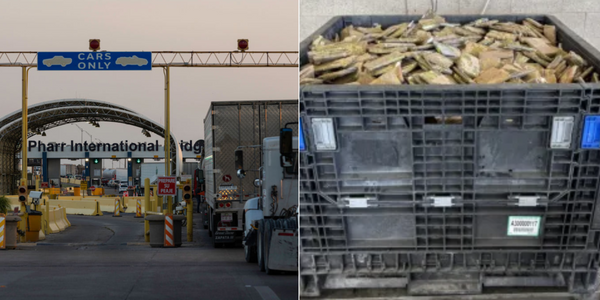LOS ANGELES — Los Angeles County will hold off on reinstituting a universal indoor public mask mandate, prompted by improvements in the region’s coronavirus case and hospitalization rates.
Aside from not implementing the order, which otherwise would have gone into effect Friday, the recent downward trends are fueling some optimism that the months-old COVID wave fueled by hyperinfectious omicron subvariants is finally starting to wane.
The renewed face covering order would have applied indoors for anyone age 2 or older at a host of establishments and venues, including shared office space, manufacturing and retail settings, event spaces, restaurants and bars, gyms and yoga studios, educational settings and children’s programs.
Masks remain required — as they have for months — in indoor public transit areas in L.A., including in taxis, Ubers and Lyfts and in airports, as well as in health care settings, nursing homes, jails, prisons, shelters and in settings where businesses or venues require it.
County health officials have for months warned that a new universal indoor mask mandate was a possibility.
As the potential implementation date drew closer, the concept became the subject of increasingly intense criticism — from residents, who questioned its necessity and efficacy; from business groups that wondered how it would affect the local economy; and from some elected officials, who expressed concerns about eroding the public’s trust and sparking further pushback.
Originally, it seemed as though the criteria for pulling this particular lever was fairly cut and dried. If the region reached the high COVID-19 community level, as defined by the U.S. Centers for Disease Control and Prevention, and remained there for two straight weeks, a new order would be issued.
The high community level means a county is experiencing both a significant amount of community spread and has recently recorded at least 10 new weekly coronavirus-positive hospitalizations for every 100,000 residents.
L.A. County entered that category July 14 and remained there last week — positioning this Thursday as the pivotal date.
But since last week, Ferrer has indicated the county would be open to a more flexible approach.
“Should we see sustained decreases in cases, or the rate of hospital admissions moves closer to the threshold for medium, we will pause implementation of universal indoor masking as we closely monitor our transmission rates,” she told the county Board of Supervisors on Tuesday.
In a promising trend, the county’s weekly coronavirus-positive hospital admission rate has fallen beneath the threshold for the high community level, according to calculations by the health department.
As of Thursday, the L.A. County Department of Public Health said there were 9.7 new weekly coronavirus-positive hospitalizations for every 100,000 residents.
The daily census of L.A. County’s coronavirus-positive patients in the hospital hit 1,329 on July 20 but has flattened since — reaching as low as 1,200 on Friday before settling in at 1,239 as of Wednesday, representing a 7% week-over-week decline.
There were 147 coronavirus-positive intensive care unit patients in L.A. County as of Wednesday, a 4% increase from the prior week.
There are other indications this latest coronavirus wave is starting to lose some steam.
As of Thursday afternoon, L.A. County was averaging about 6,100 coronavirus cases a day over the previous week, down 9% from the prior week’s average of 6,700 cases a day. On a per-capita basis, the latest rate is 425 cases a week for every 100,000 residents. A case rate of 100 or more is considered high.
The California COVID Assessment Tool, published by the state Department of Public Health, estimated that the effective transmission rate in L.A. County was 0.98 as of Thursday — indicating that the spread of COVID-19 is likely stable at this point.
Cases also are starting to fall statewide. Data released Tuesday — the most recent available — show California averaged 17,000 cases a day for the past week, down 17% from the prior week. On a per capita basis, that’s about 308 cases a week for every 100,000 residents, and while the level is dropping it’s still considered high.
The San Francisco Bay Area is reporting 267 cases a week for every 100,000 residents, down 17% over the prior week, also still in the high level.
Despite the recent declines, L.A. County is still wrestling with an immense amount of transmission. The latest case average remains far above the peak of last summer’s Delta surge, and officials note the tally is likely a significant undercount due to the widespread use of at-home tests.
The decline could be attributable to a number of factors.
As coronavirus cases climbed in recent weeks and hospitalizations worsened, a number of businesses in L.A. County tightened COVID-19 restrictions, with some canceling or postponing gatherings or moving them outside.
About a month ago, hospitalization levels passed a threshold that triggered the TV and film industry to resume certain indoor masking requirements. In shifting its in-person summer tour to virtual sessions, the Television Critics Association cited growing concerns about the surge, fueled by the hyper-contagious BA.5 subvariant, and the potential mask mandate in L.A. County as a reason why “shows in production cannot or do not want to break COVID bubbles” and “producers, writers, talent, and publicists are not willing to appear in person.”
It’s also possible that BA.5 is starting to run out of people to infect. For the week that ended Saturday, 82% of estimated coronavirus cases nationwide were of the BA.5 subvariant, a stunning pace of growth; just two months ago, BA.5 comprised less than 3% of estimated cases. And unlike the national surge dominated by the BA.2 and BA.2.12.1 subvariants, which transitioned directly into the BA.5-fueled wave, there appears to be no readily visible successor to BA.5 — at least for now.
One reason why this latest wave has proved so long-lasting is because it’s possible to get reinfected within several weeks.
Still, many people infected now are suffering relatively mild symptoms, and L.A. County’s hospitals are nowhere near as stressed as they were during the pandemic’s previous waves.
Most of the coronavirus-positive patients hospitalized countywide are not being treated for COVID-19 illness but happened to test positive upon seeking care for some other reason.
The comparatively milder nature of this wave — a development officials and experts attribute to high levels of vaccine coverage, availability of therapeutics and testing, and general changes in the nature of the coronavirus itself — has been at the forefront in arguments against a new mask mandate.
“I think now that we’re seeing that fewer people are getting serious cases of COVID, they just don’t really believe this mandate is necessary,” L.A. County Supervisor Janice Hahn said this week.
Ferrer, though, said she believed a renewed order would provide an additional layer of protection for workers, shoppers, clients and patrons — as well as the county’s more vulnerable residents.
“No one is suggesting that we need to wear masks forever; rather, that (there) are likely to be short periods of time when it makes sense,” she said this week.
That’s also not to say that the latest wave hasn’t made itself felt in other ways. Dr. Christina Ghaly, the county’s health services director, said this week that because of the high level of community transmission a number of hospital staffers are being infected and unable to work.
“In hospitals, that means that beds are closed or that it might take longer to be seen in an emergency department,” she said Tuesday. “It has several ways in which there’s an impact on facilities.”
Coronavirus-positive patients are also keeping emergency departments and urgent care centers busy — even if those individuals ultimately don’t end up needing to stay in the hospital, according to Ghaly.
“We’re also seeing that backup in the (Emergency Medical Services) system with long ‘wall times’ — wait times for ambulances in emergency departments,” she said. “That has a negative impact on the system overall because the ambulances can’t get back out to the streets.”
Although cases are trending downward and hospitalizations are relatively flat, the same can’t be said for deaths, the ultimate lagging indicator of coronavirus spread.
As of Wednesday, L.A. County was recording 108 COVID-19 deaths a week, a 21% week-over-week increase. A month ago, L.A. County was reporting about 50 deaths a week.
Nearly 4,400 people died of COVID-19 countywide over the first half of this year. That toll is twice as high as the typical six-month average number of deaths from drug overdoses, the flu and car crashes combined, according to county health figures.







